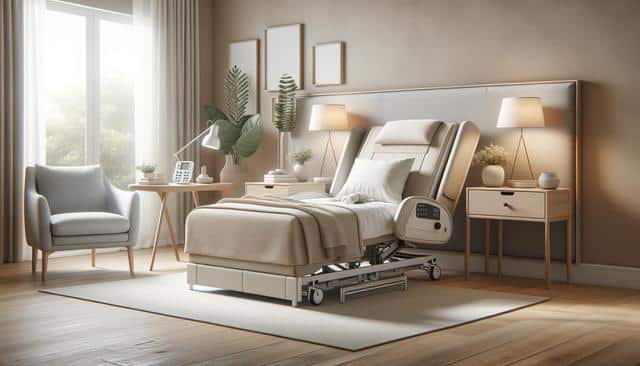
Adjustable Beds Explained: Comfort & Health Benefits
Understanding Adjustable Beds and How They Work
Adjustable beds are specially designed sleep systems that allow users to elevate or lower different sections of the bed, including the head and foot areas. This flexibility can help individuals find the most comfortable sleeping position for their needs. For seniors, this feature is particularly helpful as it can address a variety of health concerns. These beds are commonly controlled with a remote or smartphone app, making them easy to adjust without needing to get out of bed.
The core functionality of an adjustable bed lies in its motorized base. By adjusting the angles of the bed, users can reduce pressure on specific parts of the body, promote better circulation, and support alignment. Unlike standard beds, their versatility makes them a popular choice for those dealing with mobility limitations or chronic pain. Adjustable beds are also compatible with various types of mattresses, including memory foam and latex, providing further customization options.
Health Benefits for Seniors
The health benefits of adjustable beds for seniors are numerous and well-documented. As people age, common issues like arthritis, back pain, and poor circulation can significantly affect sleep quality. An adjustable bed can help relieve many of these discomforts by allowing users to sleep in a position that minimizes pain. For instance, elevating the legs can reduce swelling and improve blood flow, while raising the head can lessen acid reflux and make breathing easier.
Some of the notable health advantages include:
- Reduction in joint and back pain through better spinal alignment
- Improved digestion and breathing by elevating the upper body
- Enhanced circulation by lifting the legs
- Decreased symptoms of sleep apnea and snoring
Many seniors also find that the ability to sit up in bed with head support makes it easier to read, watch television, or enjoy meals, all from the comfort of their bed. This increased comfort and accessibility can contribute to a greater sense of independence and well-being.
Comfort and Convenience Features
Modern adjustable beds come with a variety of features designed to enhance comfort and ease of use. For seniors, these features can make a significant difference in daily life. Many models include preset positions, such as zero-gravity or anti-snore modes, which can be activated with a single touch. Massage functions are also available in some models, offering gentle vibrations that can help relax muscles and improve circulation.
Additional amenities may include:
- Under-bed lighting for nighttime visibility
- USB ports for device charging
- Wireless remote controls or smartphone compatibility
- Wall-hugging technology to keep bedside tables within reach
These elements not only add convenience but also support a safer, more accessible environment for seniors who may spend more time in bed due to mobility challenges or medical conditions.
Choosing an Adjustable Bed: What Seniors Should Consider
When selecting an adjustable bed, seniors should take several factors into account to ensure it meets their specific needs. Size, ease of use, support, and compatibility with existing furniture or mattresses are all important considerations. It’s also essential to evaluate whether the bed includes features that address individual health concerns, such as lumbar support or customizable elevation settings.
Here are a few tips for choosing the right adjustable bed:
- Ensure the remote or controls are user-friendly and clearly labeled
- Check weight capacity and motor strength for long-term durability
- Look for beds that offer trial periods or warranties
- Consider the height of the bed for ease of getting in and out
Consulting with a healthcare provider can also be helpful, especially if the bed is being purchased to manage a specific medical condition. A good fit can not only improve sleep quality but also enhance daily comfort and mobility.
Integration Into Daily Life
Incorporating an adjustable bed into a senior’s lifestyle can be a seamless process when approached thoughtfully. Many seniors find that switching to an adjustable bed improves not just nighttime rest but also daytime routines. The ability to raise the torso can make it easier to get out of bed in the morning, while foot elevation can relieve tired legs after daily activities.
Beyond personal comfort, adjustable beds can also ease caregiving. For those who receive assistance from family members or professional aides, these beds make tasks like bathing, dressing, and mobility support safer and more efficient. The added control over positioning can reduce the need for physical strain, benefiting both seniors and caregivers.
Moreover, adjustable beds can complement other health and wellness practices. For instance, combining proper sleep positioning with gentle stretching or physical therapy can further enhance mobility and pain management. By adapting to individual preferences and health conditions, adjustable beds become not just a sleeping solution but a central part of a healthier daily routine.
Conclusion: A Supportive Sleep Solution for Aging Comfort
Adjustable beds offer a thoughtful combination of comfort, functionality, and health benefits that make them especially suitable for seniors. By addressing common age-related challenges such as joint pain, poor circulation, and limited mobility, these beds provide a supportive foundation for better sleep and improved quality of life. With a variety of features tailored to individual needs, adjustable beds can enhance both nighttime rest and daytime comfort, empowering seniors to maintain independence and well-being in their own homes.

